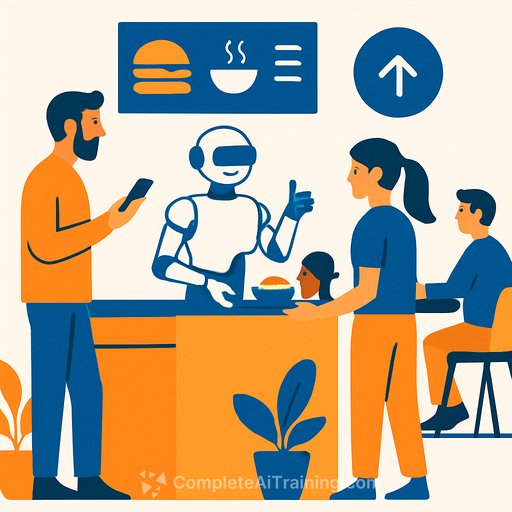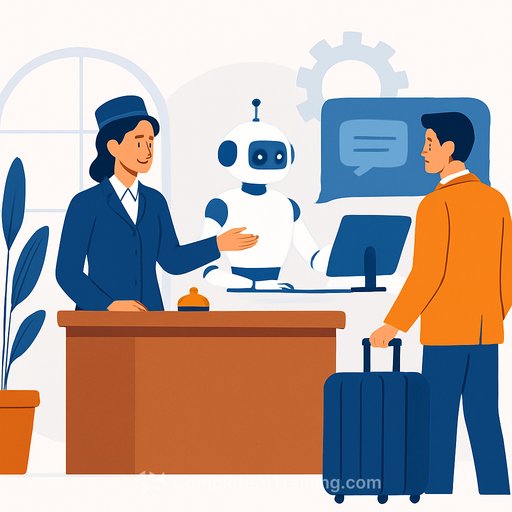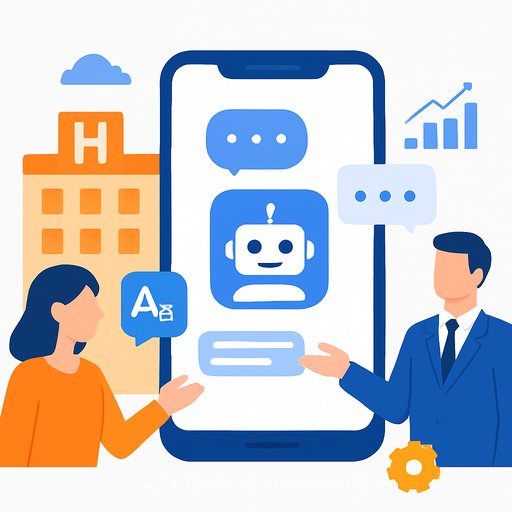Multi-brand growth meets AI: Inside Conscious Hospitality Group's strategy
Conscious Hospitality Group runs nine fast-casual brands across the Pacific Northwest with a simple rule: operations first. From Just Poke's 40 franchise locations to community-focused spots like Haps burgers, the team scales locally, protects unit economics, and builds brands neighborhood by neighborhood.
Their lens is practical: go deep in your home market before you go wide. Keep teams tight, supply chains short, and playbooks consistent. Then layer AI where it saves real time and cash.
Why "go deep" beats "go wide" in hospitality
- Shared teams and training: cross-train managers across nearby stores to reduce coverage gaps and accelerate openings.
- Vendor leverage: tighter delivery routes and higher regional volumes drive better pricing and on-time fill rates.
- Local resonance: menus, pricing, and LTOs tuned to micro-markets outperform one-size-fits-all rollouts.
- Faster learning loops: one region = quicker tests, cleaner data, fewer variables.
Operations first: the multi-brand playbook
- Standardize the back-of-house: same prep standards, portioning, labeling, and station maps across brands where possible.
- Protect unit economics: schedule to demand, not preference. Track labor as a percent of sales in real time.
- Codify checklists: opening, shift, and closing-with visible accountability and time stamps.
- QA cadence: weekly audits, mystery shops, and photo verification of line setup and cleanliness.
- Menu discipline: tight SKUs, shared ingredients, and engineered recipes to cut prep time and waste.
Sustainability from day one
CHG bakes sustainability into daily operations rather than treating it as a marketing project. Packaging choices, sourcing radius, and waste tracking tie directly to margin and guest trust.
- Run monthly waste audits and convert findings into recipe or portion changes.
- Use vendor scorecards for packaging, emissions, and delivery efficiency.
- Schedule heavy prep during off-peak energy pricing when possible.
If you're building a food waste program, this primer is a solid reference: U.S. EPA: Sustainable Management of Food.
AI that multiplies team output (without replacing them)
Won Jeong of Smart Trainer shows how AI is shortening task time across locations. Two standouts: three-second schedule generation and sales forecasts that factor weather, events, and traffic patterns.
- Three-second schedules: auto-build shifts that honor availability, skill mix, labor targets, and compliance.
- Demand forecasts: blend POS history with weather, event calendars, and traffic to staff by hour, not by guesswork.
How to deploy AI scheduling and forecasting in weeks, not months
- Data hygiene first: clean POS item names, standardize modifiers, and map store hours, events, and holidays.
- Pick two stores for a pilot: one high-volume, one average. Compare AI-on vs. AI-off over four weeks.
- Human-in-the-loop: managers approve schedules and annotate anomalies (catering spikes, maintenance, storms).
- Tight feedback: weekly standups to adjust rules, fairness constraints, and forecast windows.
- Measure ROI: look for 1-2 points of labor improvement, higher on-time clock-ins, and shorter ticket times.
For hospitality and events teams: where this adds immediate value
- Event days: ingest venue calendars and expected attendance; staff for pre- and post-event surges, not just peak hour.
- Weather swings: auto-adjust staffing and production plans for heat waves, storms, or air quality alerts.
- Traffic-aware ops: flex delivery windows and curbside staffing based on rush-hour patterns.
- Catering and pop-ups: forecast by headcount and lead time; pre-batch and cross-utilize SKUs.
KPIs that keep you honest
- Labor as % of net sales by daypart
- Forecast accuracy (by hour) and schedule approval time
- Waste lbs per $1,000 sales and on-hand variance
- Ticket time and order accuracy on peak hours
- Manager time spent scheduling per week
Rollout checklist
- Unify your item library and station maps.
- Connect POS, scheduling, weather, and event feeds.
- Pilot in two stores; document wins and edge cases.
- Train to exceptions: what to do when the forecast is off by 15%+
- Scale regionally, then repeat the playbook in the next cluster.
The takeaway from Conscious Hospitality Group is clear: tighten operations, focus your region, then use AI to compress the work. Depth compounds. Range comes later.
Want structured upskilling for your team? Explore practical programs here: AI courses by job role.
Your membership also unlocks:






